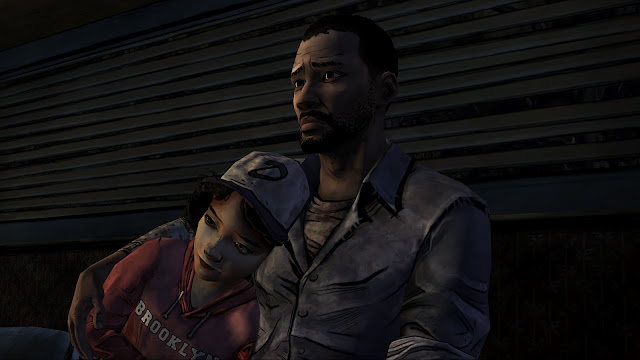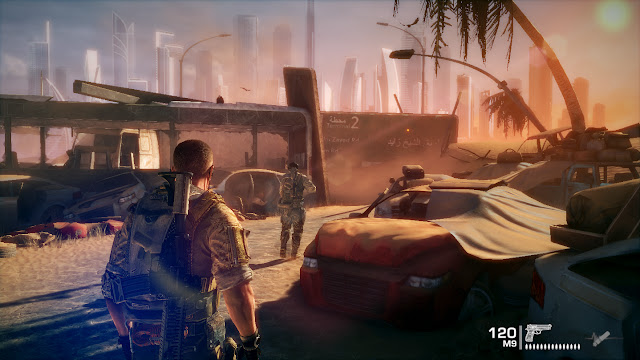It is hard to find fault with this new episode of The Walking Dead as it weaves an engrossing and heart wrenching story full of complex characters and plot twists in a beautifully realised world. Episode 3, The Long Road Ahead, offers a strange juxtaposition of darkness and whimsy throughout as, whilst this episode contains the most humour of any episode yet, it also contains the most shocks. This episode pushed the boundaries further than I thought the series would go and makes me worry that no one will be safe when the finale comes round, though that does open up a lot of exciting possibilities.
The argument from the last episode, about whether the team should stay or go, resurfaces as the food supply dwindles, there is increased bandit activity outside and now that the RV is working; with characters convincingly advocating both side. There is also the case of missing supplies for you, as the worlds greatest detective, to solve; with Duck playing the role of Dick Grayson with a gusto. The episode starts off quite light hearted but soon everything escalates into a fight for survival; just as you expect everything to settle down the first surprise of the game hits you, and from there it doesn't let up. At around two and a half hours long this is probably the longest episode yet, and whilst it does suffer from feeling slightly too drawn it, it is still great.
At first I thought that there were too many deaths in this episode and that death had been cheapened into just being an inevitability that no longer mattered, but the more I thought about it the more I realised that each death had shocked me, made me feel a different emotion, and was important to the story. The Walking Dead's greatest strength is that it makes you think and it makes you feel, something that too few games attempt, and the deaths are not just meaningless deaths of people you don't care about; each death will evoke a response and has a purpose, the impact of which may not become totally apparent until the end of the season.
Some of the problems with this episode have persisted from previous episodes; the faces of the characters don't display the range of emotions the story requires them too and the camera is often positioned badly. At one point in this episode you haver to snipe invading bandits; which feels odd and out of character for the game as it isn't normally so action orientated. The conversations at the beginning of the game feel a bit stilted as they try to bring up what happened last episode in an organic way, that just doesn't quite work. The new characters all feel like replacements for the ones lost this episode and all of them said that they don't do groups and, despite hearing how bad this groups day has been, decide to stick around.
Overall, despite a few draw backs, The Walking Dead Episode 3 is a really strong episode and a great addition to the series. With a consistently high standard of writing, excellent voice work and beautiful visuals The Walking Dead has become one of my favourite games of the year. It's characters are multi-faceted and it's not just a case of always agreeing with what some of them say, whilst disagreeing with the rest; as with the TV show you won't like half of the characters, but that doesn't always make them wrong. The Walking Dead is proof that gamers want deeply emotionally engaging stories as much as they want cheap thrills and I cannot wait for the next episode.
9/10










































